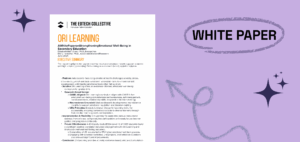Coping with stress is a challenge that many students face, with an NYU survey finding that nearly half of students feel a great deal of stress every day, and 31 percent feel somewhat stressed.
As an educator, you have the power to help your students build the skills they need to manage stressful situations. This article will explore how Social-emotional learning, or SEL, can equip your students with the emotional tools to handle stress, build resilience, and improve their well-being.
You’ll learn about the tie between teaching coping strategies and SEL, the impact of building resilience, and how SEL programs can support students dealing with trauma. Plus, we’ll highlight a few effective SEL programs and strategies you can easily integrate into your classroom to help your students succeed, no matter the challenges they face.
The Role of Social-Emotional Learning (SEL) in Coping with Stress
Social-emotional learning helps students develop skills to manage their emotions, build empathy, set goals, and become more resilient. When you teach SEL in your classroom, you’re equipping your students with the tools to handle stressful situations and tackle future challenges.
How SEL Supports Emotional Regulation
According to the Collaborative for Academic, Social, and Emotional Learning (CASEL), SEL creates a supportive environment where students learn to understand and regulate their emotions, preparing them to face challenges inside and outside the classroom.
Justina Schlund from CASEL emphasizes that SEL is essential for creating emotionally safe environments for students. When they’re dealing with stress, students need stability and support. SEL programs provide that support, helping students stay focused even when they’re facing tough situations.
SEL and Teaching Resilience
One example of coping strategies and SEL in action comes from Kendria Jones at Pine Bluff’s Jack Robey Jr. High School.
Teachers who demonstrate resilience and positive coping strategies set an important example for students. Likewise, Jones uses SEL to teach resilience by sharing her personal experiences with students, which helps her students relate to her and builds stronger connections within the classroom. You can build trust and emotional safety (both essential for learning) when your students understand that their educators care about their well-being.
As an educator, you can implement SEL strategies in your classroom to reduce student stress. With an effective SEL program in place, your students can learn to better handle their emotions and build resilience, as well as responding to challenges more confidently.
SEL as a Tool for Trauma Recovery and Resilience Building
Adverse childhood experiences (ACEs) and traumatic events—such as school shootings—can have lasting effects on your students’ emotional and academic performance.
ACEs can make it difficult for students to focus on their learning, often causing them to struggle emotionally and display disruptive behaviors. A study published in BMC Public Health found associations between ACEs and decreased school engagement and poorer educational outcomes.
The good news is that social-emotional learning programs can help students heal from traumatic situations by equipping them with the tools they need to process and cope with their emotions. Here are some of the best strategies to consider implementing:
Trauma-Informed Teaching to Support Students
Trauma-informed teaching has been proven to be effective in helping educators support students dealing with the aftermath of traumatic experiences. A study into a whole-school trauma-informed program found that the educators who took part had improved attitudes toward trauma-impacted students and experienced less burnout in their roles.
In trauma-informed classes, you focus on empathy and emotional awareness. Your aim is to create a space where your students can express their emotions safely and begin to heal. Start by providing them with a supportive environment where they feel understood and valued, allowing them to develop the necessary coping strategies.
Teaching Resilience Through SEL
One of the most powerful ways you can help students recover from trauma is by teaching resilience with SEL. When your students learn how to manage their emotions and tackle problems resiliently, they’re more likely to overcome challenges and succeed.
You can help your students to view setbacks not as failures but as opportunities to grow and learn. Encouraging a resilient mindset will support your students to face difficulties head-on and develop the coping strategies and SEL skills to keep moving forward.
The Positive Impact of SEL in Trauma Recovery
Case studies show how powerful SEL can be in trauma recovery: schools that incorporate SEL into their curricula experience stronger community ties. They can also benefit from better mental health and fewer behavioral issues.
SEL programs offer a structured solution for building a culture of care and support, so you can provide students with the protective factors they need to succeed in the long term, even in the face of past traumas.
When you implement SEL in your classroom, your students can learn their coping strategies and SEL learnings to work through their challenges and build a more positive and connected environment.
When to Work with Mental Health Professionals
Trauma-informed teaching doesn’t always mean that you should plan and deliver support to your students independently. There may be times when it’s beneficial, or even necessary, to work with mental health professionals.
Collaborating with experts in mental health means you can offer your students the comprehensive support they need. This should strengthen the support system available to students, in turn increasing the effectiveness of your SEL programs.
So, focus on how you can prioritize SEL and trauma-informed practices to create a classroom environment that encourages emotional healing and academic success. This is especially
important if you have students who are dealing with the long-term effects of trauma.
Want to see how SEL can transform your classroom? Sign up for a demo of Ori Learning’s SEL curriculum to help your students cope with trauma and tackle challenges with confidence.
Effective SEL Programs and Coping Strategies
As an educator, you have the power to help your students manage stress and anxiety by implementing SEL programs.
In this next section, we’ve listed some of the most effective SEL programs and coping strategies, which are easy to integrate into your classroom routine.
Teacher Anxiety Program for Elementary Students (TAPES)
One effective SEL program is the Teacher Anxiety Program for Elementary Students (TAPES). TAPES trains you to identify and manage student anxiety, focusing on resilience-building techniques.
You’ll learn to recognize signs of stress early, so you can respond effectively to students’ emotional needs and support them in regulating their emotions. With TAPES, you help students develop coping strategies and SEL skills for managing stress, so they have the tools to succeed.
Michele Lew’s Practical SEL Worksheets
Another popular tool is Michele Lew’s four-step SEL worksheets, which guide students in identifying their stressors and developing personalized coping mechanisms and SEL approaches.
Lew’s program is especially helpful in high-pressure educational settings where students may feel overwhelmed. The worksheets encourage students to recognize their emotional triggers and find healthy ways to respond to stress.
YouthThink, an Innovative SEL Initiative
YouthThink is another innovative SEL initiative that has shown success in addressing ACEs and supporting emotional health. The program offers interactive activities that build emotional regulation skills.
With its adaptable approach, YouthThink works in a range of educational environments and supports students from different backgrounds. The program shows how it’s possible to customize SEL programming to meet the needs of all students, no matter the challenges they face (source).
You can easily implement SEL programs like the examples we’ve shared above to help your students manage stress and build emotional resilience.
These programs offer engaging SEL activities that give students the tools to understand their emotions and develop effective coping strategies. Incorporating these resources into your classroom is an effective way to support your students in facing challenges with more confidence and emotional strength.
Integrating Coping Strategies and SEL into Your Classroom: Next Steps
Integrating SEL into your classroom can make a big difference in reducing stress and supporting emotional well-being among your students.
When you focus on emotional regulation, resilience, and empathy, you can create a space where your students can flourish, both personally and academically. As the research shows, SEL not only helps students manage stress and trauma but also builds a strong, supportive school community.
Ready to take your students’ emotional well-being to the next level? Try a demo of Ori Learning’s SEL curriculum and discover how it can help your students build resilience and cope better with challenges in and out of the classroom.



